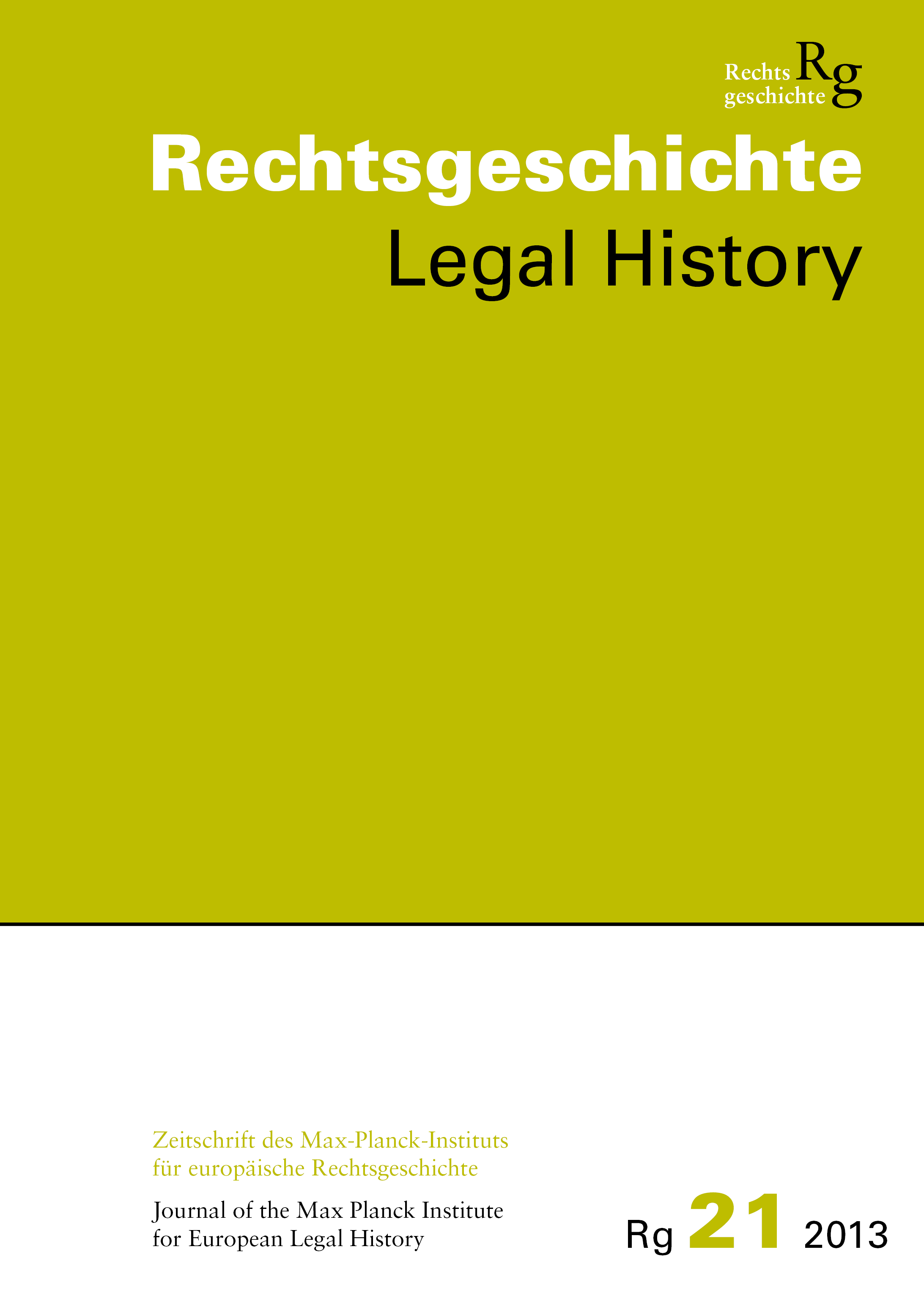How we perceive the world depends not least on what we see of it. That may sound banal, but has important consequences. In the last issue of this journal, our aim was to visualise this dependency on perspective with maps of the world. They were drawn from defined points of vision and provided a framework for the articles on the focus theme of Issue 20: the epistemological potential of global perspectives on legal history.
This Issue 21 of Rechtsgeschichte – Legal History features photos which illustrate the contingency of world views in a different way. They present the leading knowledge reservoirs we use for our legal histories: texts and the contexts of law described in them. And they show how these media are ordered, assembled and extracted and that empty shelves occasionally remain, or forgotten nooks and dark, dusty corners, because nobody is interested in these texts anymore. A principle applies, and not only in libraries: Once a book is classified wrongly or misplaced, the knowledge it contains can be lost for a very long time. With the relocation into a new building at the edge of Campus Westend of the Goethe University in Frankfurt, the more than 400,000 books held by the Max Planck Institute also moved there. Christiane Birr has documented this reordering, reassembly and transport of knowledge for the print version of our journal.
The articles in this issue, too, engage in knowledge transfer and a fruitful reorganisation of historical knowledge. In the Research section, three articles attempt – in line with the concept initiated in Issue 20 – to present summaries of the results of recent legal history research on important major themes. At first sight, two of the three contributions appear to be devoted to very Prussian topics, but they relate histories that are important far beyond this region. Thorsten Keiser presents an overview of the legal history of labour between the early modern and modern era in the German-speaking region, investigating compulsory contracts, the freedom to contract, and ultimately freedom and the compulsion to work and the role of law. Milan Kuhli examines a leading personality in the Prussian legal reforms of the late 18th century, Carl Gottlieb Svarez, and his endeavour to subject the ruler of enlightened absolutism to legal obligations. Ignacio de la Rasilla del Moral presents an introduction to the academic history of international law in the Spanish world of the 19th century – an approach to international legal history which has so far tended to be neglected and points to the importance of the different regional traditions for the emergence of this particularly dynamic field of regulation.
For the Focus ›Baptism and Law‹, a number of books rarely consulted in legal history research were taken to hand and read in a legal history perspective: what matters are the legal consequences of baptism. How strongly our view even of classical legal history topics like the historical forms of the constitution of legal capacity are shaped by a secularising perspective is addressed by Christoph H.F. Meyer in his introductory remarks. They are followed by two contributions on the history of baptism from the research field ›Law as a Civilisation Factor in the First Millennium‹ at the Max Planck Institute – his own and one by Wolfram Brandes. Richard Helmholz’ investigation of classical canonical law compares baptism and marriage in their legal consequences, while Christiane Birr and Michael Sievernich consider baptism in the New World, especially by reference to the School of Salamanca. These contributions are elaborated versions of lectures presented at a section of the 2012 Conference of German Historians in Mainz.
It was on this ocassion that Wolfram Brandes discussed which arguments and intentions underpinned the concept of the ›Family of Kings‹ which Franz Dölger had described in 1940 as an institution with legal effect and introduced into medievalist research. We publish Wolfram Brandes’ remarks as Marginalia. The other Marginalia is also closely related to the focus theme ›Baptism and Law‹ in the research field ›Law as a Civilisation Factor in the First Millennium‹ and to our efforts to acquire a better understanding of the development of legal spaces. It is an account on the discovery of a baptismal font in Ingelheim – and the conclusions drawn from that discovery. It is, at the same time, a good example of the importance of archaeological findings for legal history whose sources are, after all, not to be found in books alone! |
For the Forum, we asked a number of colleagues to re-read Harold J. Berman’s work. Thirty years ago, in 1983, Law and Revolution. The Formation of the Western Legal Tradition, probably his most influential work, was published. It was translated into many languages and – despite some criticism especially from German mediaevalists and legal historians, but also the great geopolitical changes that have occurred since – became an influential and widely read presentation of the legal history of ›the West‹. It takes up many arguments Berman had already formulated in 1974 in The Interaction of Law and Religion and prepared those he summarised in 2003 in Law and Revolution II: The Impact of the Protestant Reformations on the Western Legal Tradition. We are very pleased to be able to publish a range of thoughtful discussions of his work – from his own university in Atlanta, from Frankfurt, Warsaw, and Beijing.

















































